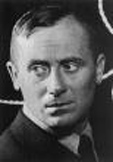Joan Miro

(Spain, 1893-1983) Joan Miro began taking art classes at age 7, and was admitted to the Academy of Fine Arts in Barcelona at the age of 14. He began to study business classes at his parents behest and became a bookkeeper, although he would continue to study art at the same time. Returned to painting full time at the Gali Academy (Barcelona) in 1912 and gave his first exhibition in 1918. His long career would see him work in a large range of styles, from "poetic realism" (the best known example of this his 1921-1922 "The Farm") to surrealism to abstract.Joan Miro and Salvador Dali were the leading Spanish Surrealists. Miro produced a massive 2,000 oil paintings, 500 sculptures, 400 ceramic objects, and 5,000 drawings and collages, and had a huge influence on post-war art in the United States. His former studio in Palma de Majorca is now a museum dedicated to his life and work. "Form for me is never something abstract," Miró once said. "It is always a token of something. . . . For me, form is never an end in itself." So here is a work of political reference and artistic allusion, a work supposed to draw its meaning from the events that elicited it and from other art elicited by those events. But how could one tell, descending the coiled ramp of the Guggenheim Museum, that this is a piece of political art, an exile's meditation on war and loss, a dark poem in a dark time, a counterthrust in the style wars of Paris? It looks like what its title says it is: a still life with a shoe. The shoe is luminous, parti-colored, comical. But the image is otherwise realistic and recognizable, like a good cartoon. That fact sets it off from the works that immediately surround it: Miró had not painted objects realistically and recognizably since 1923, even if his forms were always tokens of real things. But that fact, if it is even relevant, would not be visible in the painting alone, without the context of its peers.